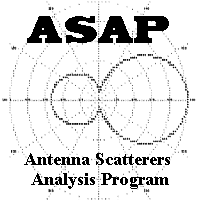
{The document was scanned from the original using Optical Character Recognition in January 1998. Some errors or variations from the original may exist. Comments added to clarify points that may not be obvious or to indicate changes to the original document are inclosed in curly braces "{ }" such as this introduction. Some corrections (e.g. spelling) and format editing were made without indication. Due to the poor quality of the original, equations were recreated rather than scanned. Comments, editing, equation creation, and scanning by R.L. Cross, from January 1998 to September 2002}
| Note that the whole text portion of the ASAP website including Users Manual, System Manual and other items (except for the executables and source) code is now available in one zip file from the download page. When it is unzipped keep the directory structure the same for the links to work. The executables and source code should be downloaded separately from the download page. |
Source Code Symbol Dictionary
The antennas-scatterers Analysis Program (ASAP) for thin wire structures in a homogeneous conducting medium performs a frequency domain analysis of antennas and scatterers, The program is applicable in the presence of a ground {that has} either perfect or finite conductivity. This appendix will describe the computer program which accomplishes this. Although the program was written for the IBM 360 computer system it can be executed on another system with minor modifications.
A piecewise-sinusoidal expansion is used for the current distribution, The matrix equation ZI = V is generated by enforcing reaction tests with a set of sinusoidal dipoles located in the interior region of the wire. Since the test dipoles have the same current distribution as the expansion codes, this may be regarded as an application of Galerkin's method. Rumsey's reaction concept was most helpful in this development, and therefore the formulation is known as the "sinusoidal reaction technique".
The main routine and each subroutine is discussed separately in this appendix, The writeups for the subroutines are arranged alphabetically by subroutine name after the main program, Each of the discussions includes the purpose of the subroutine, brief description, and a listing. {The listing is not included here as the source code is available and can be viewed with an editor} After the subroutine writeups is a table of the more common symbols used in this program.
The input data and program limits are discussed in detail in the next appendix titled "USERS MANUAL"
Source Code Symbol Dictionary
Goto User's Manual
See also the quick reference for the user's guide.
Goto Examples page
Goto Download Page
Return to ASAP Homepage
| Note that the whole text portion of the ASAP website including Users Manual, System Manual and other items (except for the executables and source) code is now available in one zip file from the download page. When it is unzipped keep the directory structure the same for the links to work. The executables and source code should be downloaded separately from the download page. |
Last modified on: 3 Nov 2007